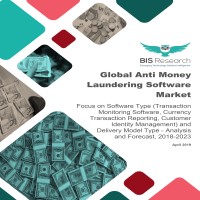As there is an increase in money transaction activities. It has been observed that in past few years, instances of money laundering have been increased. These incidences have become very challenging for finance sectors and financial institutions. This has resulted in the augmented adoption of anti-laundering software. The accelerating number of cultured cyber-attacks have raised the concerns of significant losses in a number of industries and organization. It is the need of the hour to adopt Ant
laundering (6)
Following A deep dive into how businesses can ensure they keep up with evolving sanctions regimes with Martha Kliss from UCB, a global organisation within the pharmaceutical industry, we’re continuing to examine the landscape – this time with a practitioner’s views and insight into implementing Anti-Money Laundering (AML) directives.
Olivia Tawadros is a Senior Analyst at UAE’s Financial Intelligence Unit (FIU), who was a key figure in the implementation of the goAML reporting platform, developed
I AM RETIRING SO HERE ARE SOME PARTING SHOTS
FIRST
I posted an essay with a similar title at academia here
https://www.academia.edu/6351124/There_is_no_risk_free_rate_of_return_available
There should be a risk free investment because its absence is slowing the world's economies.
You can read more here:
http://macro-economic-design.blogspot.com
and here:
SECOND
HOW DAMAGING IS MONEY LAUNDERING LEGISLATION?
AML system is a combination of different types of software, including transaction monitoring software, currency transaction reporting software, customer identity management software, and compliance management software, among others (sanction screening software and case management software). These software are responsible for addressing AML business requirements. They focus on identifying suspicious patterns of transactions, which may lead to the filing of Suspicious Transaction Reports (STRs) or
Dear Friends,
You may be aware that the Government of India demonetised the highest two denomination bills of INR1000/- and INR500/- on 8th November 2016. Whilst, the usage of demonetisation as a tool to fight corruption and money laundering is debatable, the Indian case study, as per a Reserve Bank of India memo released on 11th August 2017 mentions that an estimated INR2.8 to INR 4.3 Trillion flowed incrementally (money kept outside the banking system) into the banking system. Circa INR64=1-USD
- The book examines the issues of Money Laundering and Financing of Terrorism.
- It analyses 155 money laundering case studies, examines the impact of money laundering in 10 countries and elaborates on the three well known financial crises.
- It looks at the risk holistically by examining the risks within each sector of the eco-system (for example: the election system, bank, hawala, real-estate) and also at the National level.
- The applicable United Nation resolutions and FATF recommendations are explaine
